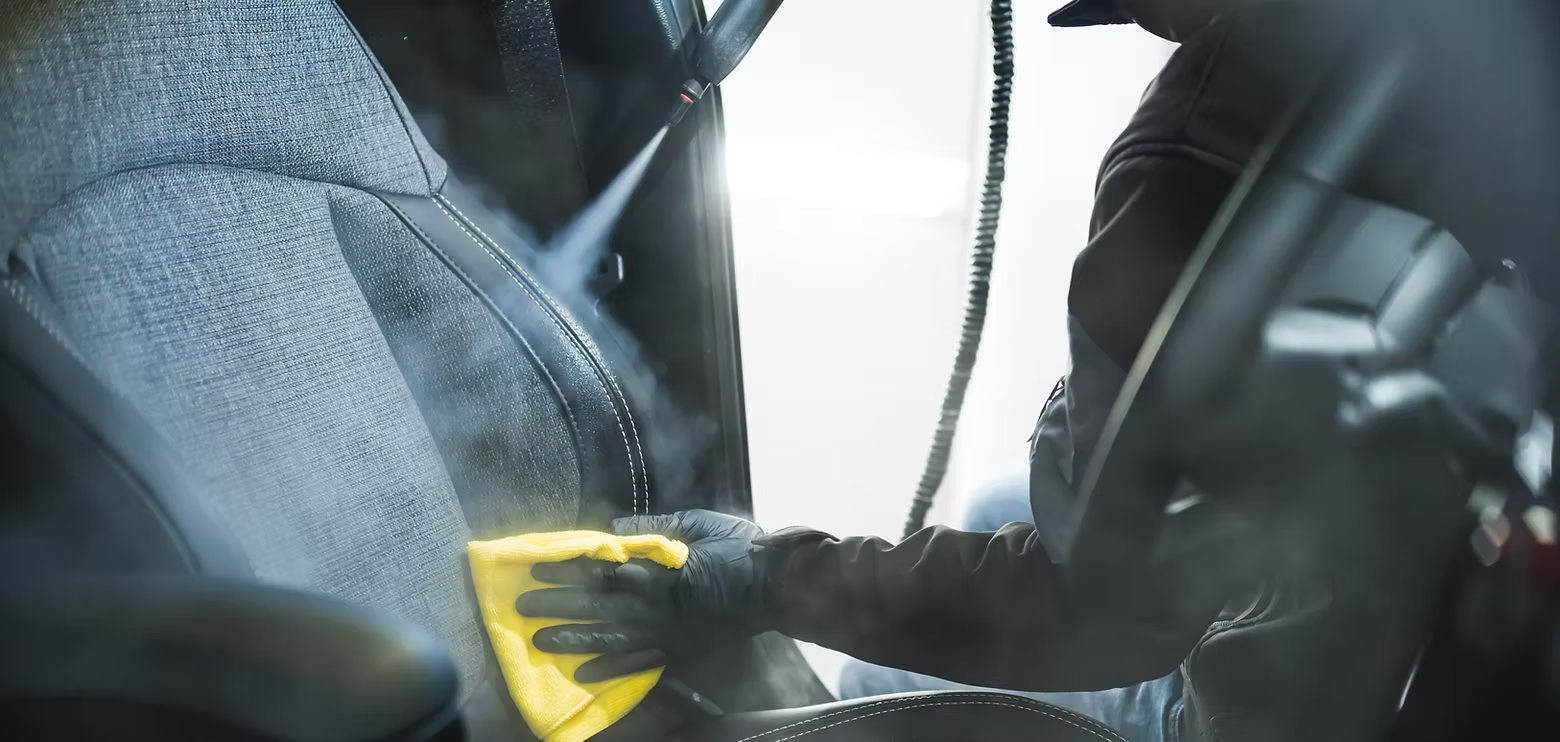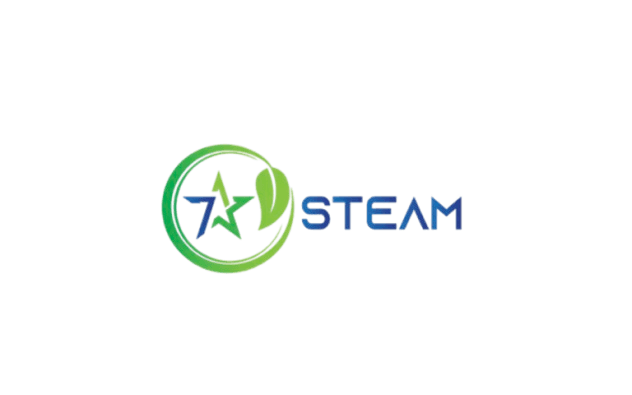Professional Smoke Odor Elimination: The Complete Guide

Smoke odor in vehicles is one of the most persistent and challenging problems to eliminate. Whether from cigarettes, cigars, or fire damage, smoke particles penetrate deep into every surface, creating a smell that simple air fresheners can't mask. Professional smoke odor elimination uses advanced techniques to permanently remove these odors at the molecular level.
Why Smoke Odor Is So Difficult to Remove
Smoke contains thousands of chemical compounds that bond to surfaces and become embedded in porous materials. These particles don't just sit on surfaces—they penetrate upholstery foam, carpet padding, headliners, air ducts, and even the vehicle's ventilation system. The smell comes from volatile organic compounds (VOCs) that continuously off-gas from these contaminated materials.

Professional ozone treatment permanently eliminates smoke odor at the molecular level
Traditional cleaning methods only address surface contamination, which is why the smell often returns. The odor molecules remain trapped in foam, insulation, and HVAC components, slowly releasing over time. This is why professional treatment is necessary for permanent elimination.
The Professional Smoke Odor Removal Process
Professional smoke odor elimination follows a comprehensive multi-step approach that addresses both surface and deep contamination:
1. Pre-Treatment Cleaning
The first step is thorough cleaning of all interior surfaces to remove visible smoke residue and tar buildup. This includes:
- Wiping down all hard surfaces with enzyme-based cleaners that break down smoke particles
- Cleaning windows and mirrors to remove nicotine film
- Treating dashboard, door panels, and center console
- Cleaning air vents and visible HVAC components
- Removing and cleaning floor mats
Enzyme cleaners are particularly effective because they chemically break down the organic compounds in smoke, rather than just masking them. This pre-treatment removes the bulk of surface contamination and prepares the vehicle for deeper treatment.
2. Deep Steam Cleaning
Professional steam cleaning is essential for penetrating porous materials where smoke particles hide. High-temperature steam (200-250°F) accomplishes several things simultaneously:
- Breaks down and lifts smoke particles from deep within upholstery fibers
- Sanitizes surfaces by killing bacteria and neutralizing odor-causing compounds
- Penetrates carpet padding and seat foam where smoke has accumulated
- Cleans headliners without damaging delicate materials
- Reaches crevices and seams where smoke residue collects
The combination of heat and moisture helps release trapped smoke particles, which are then extracted along with the steam. This process is repeated multiple times on heavily contaminated areas to ensure thorough cleaning.
3. Carpet and Upholstery Extraction
After steam cleaning, professional carpet extractors remove the loosened smoke particles along with excess moisture. These powerful machines use hot water extraction to flush out contaminants from deep within carpets and upholstery. The extraction process is critical—it physically removes the smoke particles rather than just neutralizing them.
Multiple passes with the extractor ensure maximum removal of smoke residue. The extracted water typically shows a brown or yellow tint, visual proof of the contamination being removed from the vehicle.
4. Ozone Shock Treatment
Ozone treatment is the most powerful method for permanent smoke odor elimination. Ozone (O₃) is a highly reactive molecule that breaks apart odor-causing compounds at the molecular level. Unlike air fresheners that mask smells, ozone actually destroys the source of the odor.
Here's how the ozone treatment process works:
- The vehicle is sealed with windows and doors closed
- An ozone generator is placed in the center of the vehicle
- The HVAC system is set to recirculate to treat the air ducts
- The generator runs for 1-8 hours depending on contamination severity
- Ozone gas penetrates every surface, crevice, and air duct
- The ozone molecules oxidize and neutralize smoke particles
- After treatment, the vehicle is ventilated for at least 30 minutes
Ozone treatment is incredibly effective because the gas reaches areas that manual cleaning cannot, including inside dashboard components, behind panels, and throughout the entire HVAC system. It kills bacteria, neutralizes viruses, and eliminates mold in addition to removing smoke odor.
5. HVAC System Treatment
The vehicle's heating, ventilation, and air conditioning system is often the most contaminated area in a smoker's car. Smoke particles accumulate on the evaporator core, blower motor, and throughout the ductwork. If the HVAC system isn't treated, it will continue to release smoke odor every time the system runs.
Professional treatment includes:
- Replacing the cabin air filter, which traps smoke particles
- Applying antimicrobial foggers through the air intake
- Running ozone treatment with the HVAC on recirculate
- In severe cases, accessing and cleaning the evaporator core
- Treating all air vents and ductwork
6. Final Protection and Sealing
After odor elimination, professionals apply protective treatments to prevent future odor absorption and make surfaces easier to clean. This includes fabric protectants for upholstery and carpets, and conditioning treatments for leather and vinyl surfaces.
Understanding Ozone Treatment Safety
While ozone treatment is highly effective, it must be performed correctly for safety. Ozone is a powerful oxidizer that can irritate the lungs and remove oxygen from the air. This is why professional application is essential:
- Never run ozone with people or pets inside: The vehicle must be completely unoccupied during treatment
- Proper ventilation is critical: After treatment, the vehicle must be aired out thoroughly before occupancy
- Material considerations: Ozone can affect certain materials like rubber and some plastics over time
- Professional monitoring: Technicians use ozone detectors to ensure safe levels
- Conditioning after treatment: Leather and vinyl should be conditioned to prevent drying
When performed by trained professionals, ozone treatment is completely safe and leaves no harmful residue. The ozone naturally converts back to oxygen (O₂) after treatment, leaving no toxic compounds behind.
Alternative and Complementary Methods
While ozone treatment is the gold standard, professionals may use additional methods for comprehensive odor elimination:
Activated Charcoal Treatment
Activated charcoal naturally absorbs odors and can be used as a follow-up treatment. Professionals may place charcoal bags throughout the vehicle for several days after primary treatment to capture any remaining odor molecules.
Hydroxyl Generators
For vehicles with sensitive materials or when ozone isn't suitable, hydroxyl generators offer an alternative. These machines produce hydroxyl radicals that neutralize odors without the material concerns associated with ozone. The process takes longer but is safe to use with people present.
Enzyme Foggers
Enzyme-based foggers distribute odor-neutralizing compounds throughout the cabin. These enzymes break down organic odor molecules and can reach areas that manual cleaning misses.
How Long Does Treatment Take?
Complete professional smoke odor elimination typically requires 4-8 hours, depending on contamination severity:
- Light smoke exposure: 4-6 hours including cleaning and ozone treatment
- Moderate contamination: 6-8 hours with multiple cleaning passes
- Heavy smoker vehicles: 8+ hours, possibly requiring multiple ozone treatments
- Fire damage: May require multiple days and component removal
Maintaining an Odor-Free Vehicle
After professional treatment, maintain your vehicle's fresh interior with these tips:
- Never smoke inside the vehicle
- Replace cabin air filters regularly (every 12,000 miles or annually)
- Use seat covers and floor mats to protect surfaces
- Ventilate the vehicle regularly by opening windows
- Address spills and odors immediately before they set in
- Consider professional interior protection treatments
- Schedule regular professional detailing to maintain freshness
Why DIY Methods Fall Short
Many vehicle owners try DIY smoke odor removal with limited success. Common methods like air fresheners, baking soda, and household cleaners only provide temporary relief because they:
- Mask odors rather than eliminating them
- Can't reach deep contamination in foam and padding
- Don't treat the HVAC system where much of the odor originates
- Lack the power to break down smoke particles at the molecular level
- May actually make the problem worse by adding new scents
Professional treatment addresses the root cause of smoke odor, providing permanent results rather than temporary masking.
Eliminate Smoke Odor Permanently
Don't settle for temporary solutions or lingering smoke smell. Our professional smoke odor elimination service uses advanced ozone treatment, steam cleaning, and specialized techniques to permanently remove smoke odor from your vehicle. We bring professional-grade equipment directly to your location for convenient, effective service.
Schedule Odor Removal